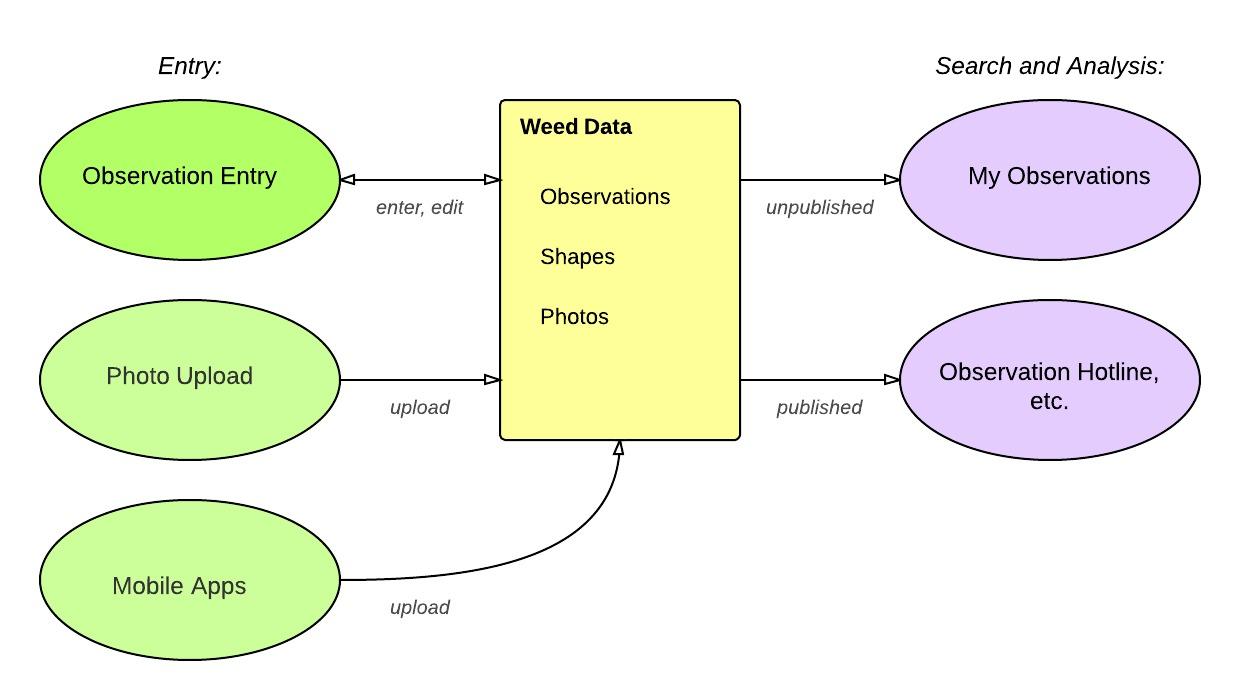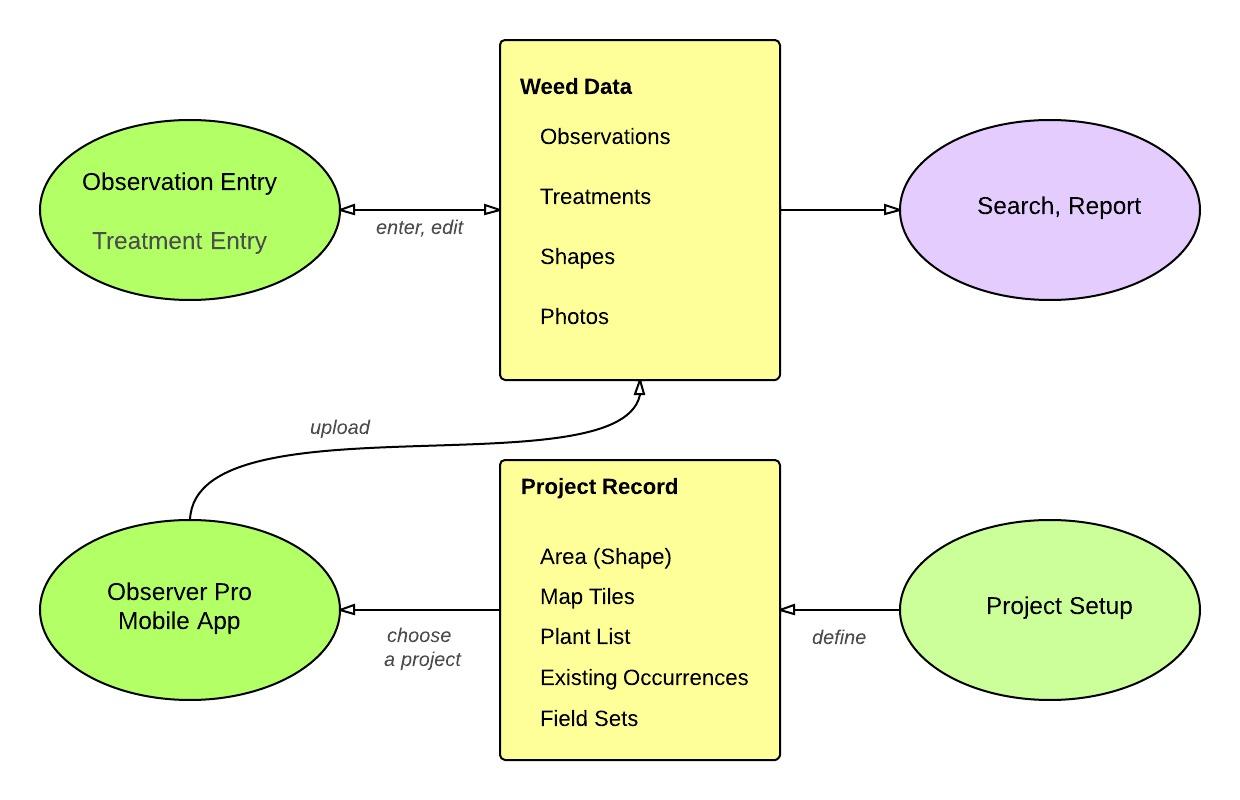-
Weed Manager is
a system (multiple software components working together)
for organizations engaged in land management.
- It enables a land manager
to track weed infestations and treatments over time.
- Each organization which subscribes
to Weed Manager
will essentially be using a private copy of the system
with the option of sharing the data they collect with
other subscribing organizations within the system,
with other Calflora users,
and with other systems
such as CalWeedMapper.
- Each organization
can configure certain aspects of how
they want to use the system
for instance, by choosing which
fields are required, or which extra fields they want to collect
for occurrences and assessments.
- The way a small organization uses it
is different from how a large organization uses it.
- The core data fields collected and the core methodology
remain standard across all organization subscribers,
thus enabling data exchange and integration.
|
|
Here are two hypothetical
examples of how different organizations might use the system.
Organization A
is small and uses the system in the simplest and least expensive way,
without any customizations.
Organization B
is large and has more exacting reporting requirements, and so uses
the system in a more complex way including many customizations.
|
Organization A |
Organization B |
| Group |
4 users; 2 of them part-time. The group owner is the only person with the
Data Czar role.
|
15 users; 2 of them have the
Data Czar role.
|
| Project |
The organization has a single project called Priority Weeds.
This project contains the list
of priority weeds on the organization's land.
The list of weeds changes occasionally.
|
For each region that the organization takes care of,
the organization makes a new project at the beginning of
each field season, called, for instance, Region 2 Weed Inventory 2019.
The project record contains the short list
of plants whose populations will be inventoried that year,
and the list of occurrences which will be re-assessed.
The organization also makes a new project at the beginning of
each field season, called, for instance,
Region 2 Weed Treatment 2019.
The project record contains
the list of occurrences which will be treated that year.
(People doing treatment load this list onto their
tablets when they go into the field.)
|
| Occurrence |
No extra fields.
|
The following extra fields are included to further characterize
the location of the plant: region, nearby vegetation,
distance to water.
Region is required and auto-populated from coordinates; the others are optional.
Whenever an occurrence record is entered,
the user enters
number of people and number of hours,
and a session record is generated with these values.
|
| Assessment |
No extra fields.
Only date, observer, and number of plants are required.
|
No extra fields.
All fields are required. Shape (line or polygon)
is strongly encouraged.
Whenever an assessment is entered,
the user enters
number of people and number of hours,
and a session record is generated with these values.
|
| Treatment |
No extra fields.
(treatment-occ) percent treated is not required.
(treatment event) shape is required.
|
The following extra fields are included in treatment method:
adjuvant name and adjuvant concentration.
(treatment-occ) percent treated is required.
(treatment event) shape is required.
Whenever a treatment event is entered,
the user enters
number of people and number of hours,
and a session record is generated with these values.
|
| Session |
During field season,
one session record is explicitly entered
to summarize all occurrence work done in a day,
one session record is explicitly entered
to summarize all assessment work done in a day,
and one session record is entered to summarize all treatment
work done in a day. At the end of the season,
a report is run that shows the mix of occurrence, assessment
and treatment work.
|
Session records are not entered explicitly.
Whenever an occurrence, assessment or treatment record is added,
an accompanying session record is generated.
At the end of the season,
a report is run that shows the mix of occurrence work, assessment work
and treatment work for each target weed.
|
|

